Introduction
Spanish cuisine is a delicious tapestry of flavors, colors, and culinary traditions. From the iconic paella to the humble tapas, Spanish food embodies the country’s rich history, diverse regional influences, and passion for fresh ingredients. Get ready to embark on a culinary journey as we explore top facts about Spanish food.
Top 15 Facts About Spanish Food
- Paella is not Spain’s national dish.
- Spain boasts the highest number of bars per capita in the EU.
- Spain is the world’s largest producer of olive oil.
- Spanish omelet is called “tortilla de patatas.”
- The Spanish introduced tomatoes, potatoes, and chocolate to Europe.
- Spain produces around 75% of the world’s saffron.
- Churros are a popular breakfast treat in Spain.
- Fried fish (pescaíto frito) is believed to have originated in Andalusia.
- Spain is a major exporter of wine.
- Tapas are a way of eating rather than specific dishes.
- Spanish cuisine is heavily influenced by the Mediterranean diet.
- Gazpacho is a famous chilled tomato-based soup.
- Jamón ibérico (Iberian ham) is a Spanish delicacy.
- Spaniards typically eat dinner quite late, often around 9 or 10 pm.
- Many traditional Spanish desserts are milk-based.
Fact 1: Paella is not Spain’s national dish.
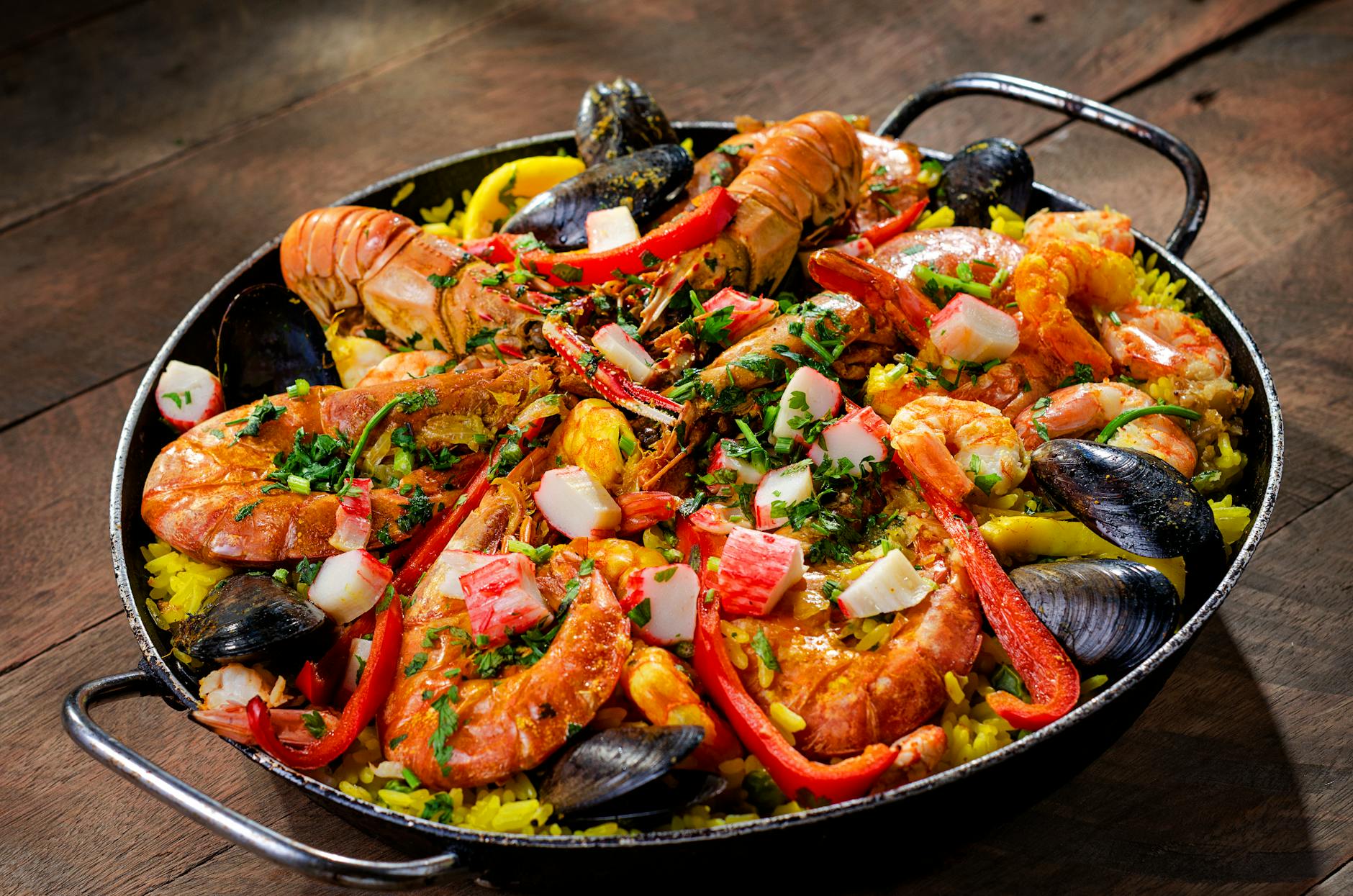
While paella is internationally famous, it’s actually a regional Valencian specialty. Each region in Spain prides itself on its own unique culinary contributions. Paella originated in Valencia, a coastal region on Spain’s eastern coast. The dish traditionally used ingredients readily available in the region, such as rice, saffron, vegetables, and seafood. Over time, paella variations emerged throughout Spain, incorporating local ingredients and flavors. For example, paella valenciana features chicken, rabbit, and green beans, while paella marisco is a seafood-centric version.
Fact 2: Spain boasts the highest number of bars per capita in the EU.

Bars are not just places to drink in Spain; they are social hubs that serve as an extension of people’s homes. Stepping into a lively Spanish bar, you’ll encounter a welcoming atmosphere that revolves around socializing, sharing tapas, and enjoying a glass of wine or a caña (a small draft beer). These casual establishments are a great way to immerse yourself in Spanish culture and savor the local cuisine. From bustling bars in major cities to cozy bodegas in hidden alleys, you’re never far from a spot to unwind and enjoy a taste of Spain.
Fact 3: Spain is the world’s largest producer of olive oil, accounting for around half of the world’s total olive oil production.

Olive oil is deeply ingrained in Spanish cuisine, with its presence gracing countless dishes. The favorable climate in Spain, particularly in Andalusia, Extremadura, and Castile-La Mancha, is ideal for growing olive trees. Spanish olive oil is prized for its quality and distinct flavor profile, which can vary depending on the olive variety and pressing method. Extra virgin olive oil, the highest grade, is obtained through the first cold pressing of olives and boasts a rich, fruity flavor. Spanish olive oil not only adds depth and character to dishes but also contributes to the healthfulness of Spanish cuisine. Olive oil is a cornerstone of the Mediterranean diet, recognized for its heart-healthy benefits due to its monounsaturated fats and antioxidants.
Read More: A Chocolate Lover’s Time Travel: 15 Fascinating Facts About the History of Chocolate
Fact 4: Spanish omelet, known as “tortilla de patatas,” is a simple yet satisfying dish enjoyed at any time of day.
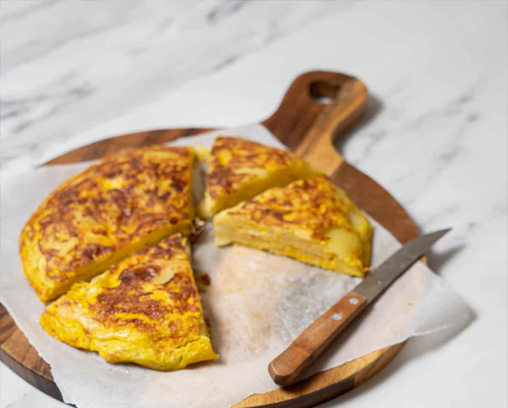
This national treasure features eggs, potatoes, and onions cooked together in olive oil until golden brown and slightly set. The beauty of tortilla de patatas lies in its versatility. It can be served hot or cold, for breakfast, lunch, dinner, or even as a snack. Some variations incorporate additional ingredients like chorizo, peppers, or cheese.
Fact 5. The Spanish introduced tomatoes, potatoes, and chocolate to Europe.
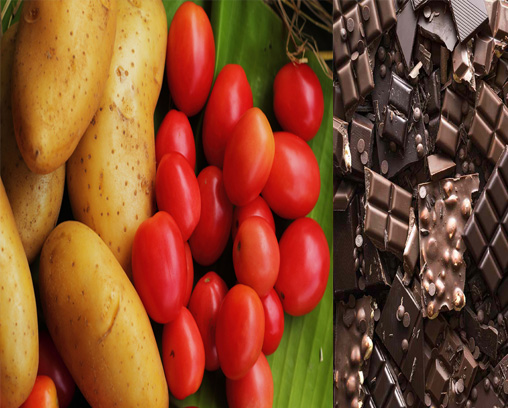
These ingredients, brought from the Americas, revolutionized Spanish cuisine and eventually the cuisines of the world.
Prior to European exploration of the Americas, tomatoes, potatoes, and chocolate were unknown in Europe. Spanish conquistadors encountered these ingredients in the New World and brought them back to Spain in the 16th century. Initially, there was some hesitation towards these new foods, with some even believing tomatoes to be poisonous! However, over time, tomatoes, potatoes, and chocolate were embraced and became integral parts of Spanish cuisine.
- Tomatoes: Tomatoes added a vibrant acidity and sweetness to Spanish dishes, influencing everything from stews and sauces to gazpacho (a chilled tomato soup) and paella variations.
- Potatoes: Potatoes became a staple food in Spain, providing a starchy base for countless dishes. They are featured in tortillas, stews, and as a simple side dish.
- Chocolate: Chocolate was initially consumed as a beverage, often spiced with chili peppers. Over time, it evolved into a key ingredient for desserts and pastries, like churros dipped in hot chocolate for breakfast. Spanish chocolate tends to be darker and less sweet than its milk chocolate counterparts.
The introduction of these ingredients by the Spanish had a profound impact on global cuisine. Tomatoes, potatoes, and chocolate became staples across Europe and eventually found their way into cuisines worldwide. They continue to be essential ingredients in countless dishes today.
Fact 6. Spain produces around 75% of the world’s saffron.

This precious spice, essential to paella, is painstakingly harvested from crocus flowers.
Saffron is the world’s most expensive spice, prized for its delicate flavor and aroma. Spain is the world’s leading producer of saffron, cultivating around 75% of the global supply. The saffron-growing regions of Spain, primarily Castilla-La Mancha, benefit from a dry climate and long hours of sunshine, ideal for cultivating saffron crocus flowers. Harvesting saffron is a labor-intensive process. The delicate saffron threads are hand-picked from the flowers before undergoing a drying process. The small amount of saffron needed for a dish contributes to its high price tag. However, even a tiny pinch of saffron infuses food with a warm, floral aroma and subtle yet complex flavor. In Spain, saffron is used not only in paella but also in stews, sauces, and rice dishes.
Read More: Beyond Croissants: 15 Surprising Facts About French Cuisine
Fact 7. Churros are a popular breakfast treat in Spain.
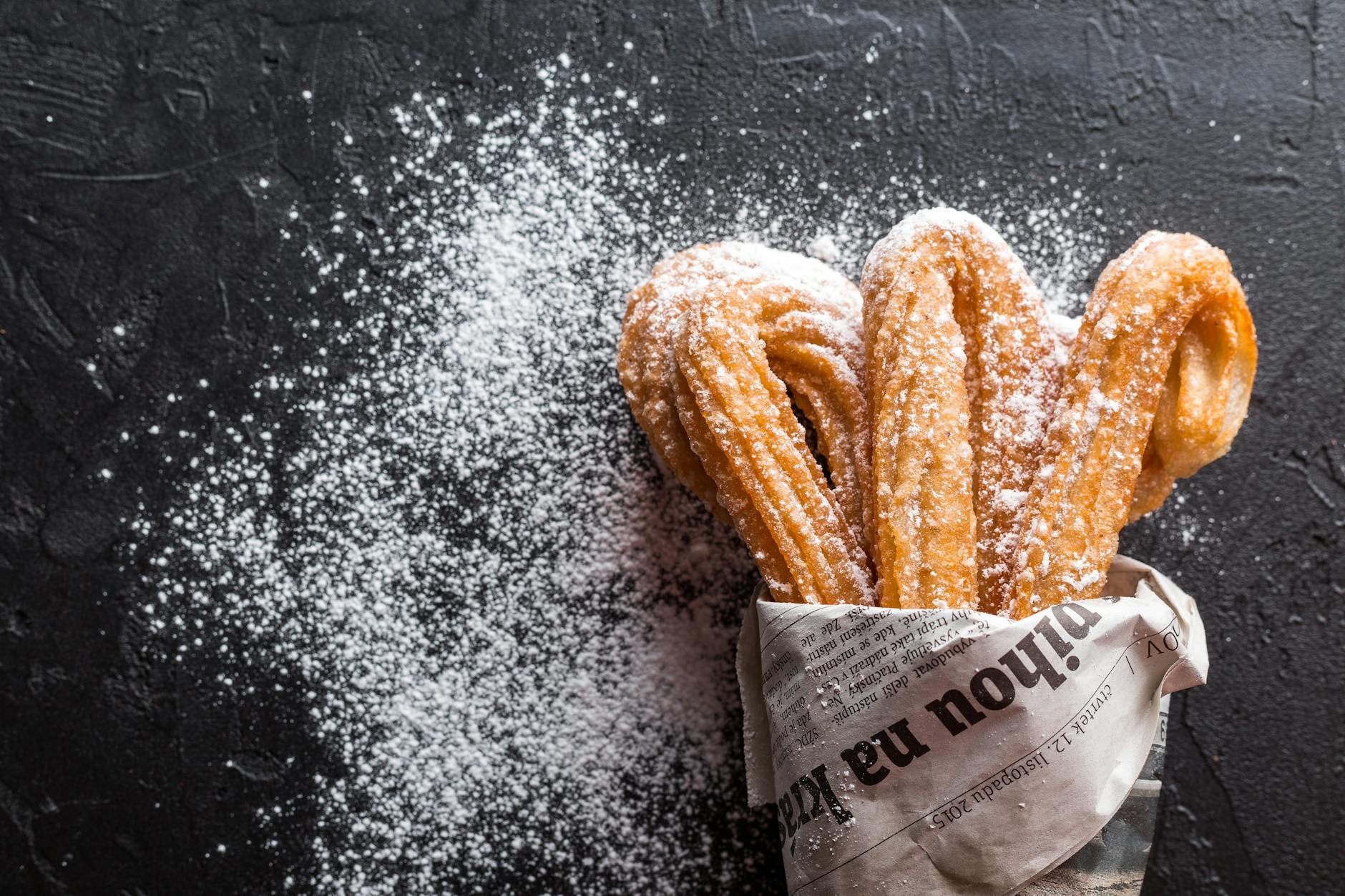
Churros are a beloved breakfast food in Spain, enjoyed alongside a steaming cup of thick hot chocolate for dipping. These golden-brown fried dough sticks are typically made from a simple choux pastry dough. The dough is piped into long, thin shapes before being fried until crisp on the outside and light and fluffy on the inside. Churros are not overly sweet on their own, allowing the rich chocolate to complement their flavor. They are a delightful indulgence to start the day, and churrerías (churros shops) are a common sight in Spanish towns and cities.
Fact 8. Fried fish (pescaíto frito) is believed to have originated in Andalusia, a southern region of Spain with a rich seafood tradition.
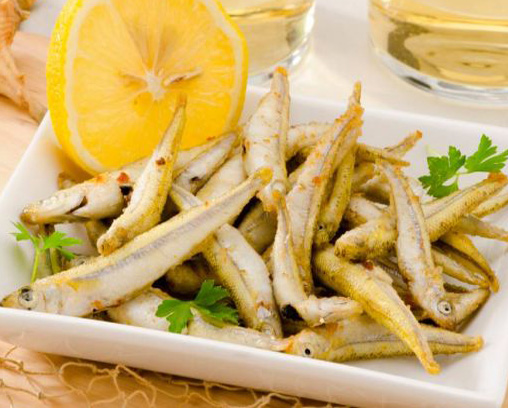
The abundance of fresh seafood on Spain’s coastlines has naturally influenced its cuisine. Fried fish, known as pescaíto frito, is a classic Spanish tapa and a staple in Andalusia. Small fish, such as anchovies, sardines, and squid, are coated in a light flour batter before being fried until golden and crispy. Pescaíto frito is typically served hot with a squeeze of lemon and perhaps a side of alioli, a garlicky mayonnaise sauce. The simplicity of this dish allows the fresh flavors of the fish to shine through.
Fact 9. Spain is a major exporter of wine.

From Rioja’s bold reds to the sparkling Cavas, Spanish wines enjoy global recognition. Spain boasts a rich winemaking tradition with diverse wine regions scattered across the country. Some of the most renowned Spanish wines include:
- Rioja: Located in northern Spain, Rioja is famous for its Tempranillo-based red wines, often aged in oak barrels to develop complex flavors. Rioja wines are classified into categories like Crianza, Reserva, and Gran Reserva, indicating their aging time.
- Ribera del Duero: Another prominent red wine region located along the Duero River. Ribera del Duero is known for its powerful Tempranillo-based wines with intense flavors.
- Penedès: Situated in Catalonia, Penedès is the heartland of Cava production. Cava is a sparkling wine made using the traditional method, similar to Champagne in France.
- Rías Baixas: Located in Galicia, Rías Baixas produces crisp, refreshing white wines predominantly made from the Albariño grape.
Spanish wines are enjoyed worldwide and often represent excellent value for their quality.
Fact 10. Tapas are a way of eating rather than specific dishes.

Tapas are perhaps one of the most iconic aspects of Spanish food culture. The word “tapa” literally means “cover” or “lid” and is believed to have originated with the practice of covering drinks with small plates of food to keep flies out. Over time, tapas evolved into a beloved social dining style. Traditionally, tapas are small, savory bites designed to be shared with friends and family over drinks. Tapas bars offer a wide variety of options, from simple snacks like olives or cheese to more elaborate dishes like patatas bravas (fried potatoes with spicy sauce), croquetas (creamy, breaded fritters), or grilled octopus. The beauty of tapas lies in the ability to try a wide range of flavors and textures in one meal.
Fact 11. Spanish cuisine is heavily influenced by the Mediterranean diet.
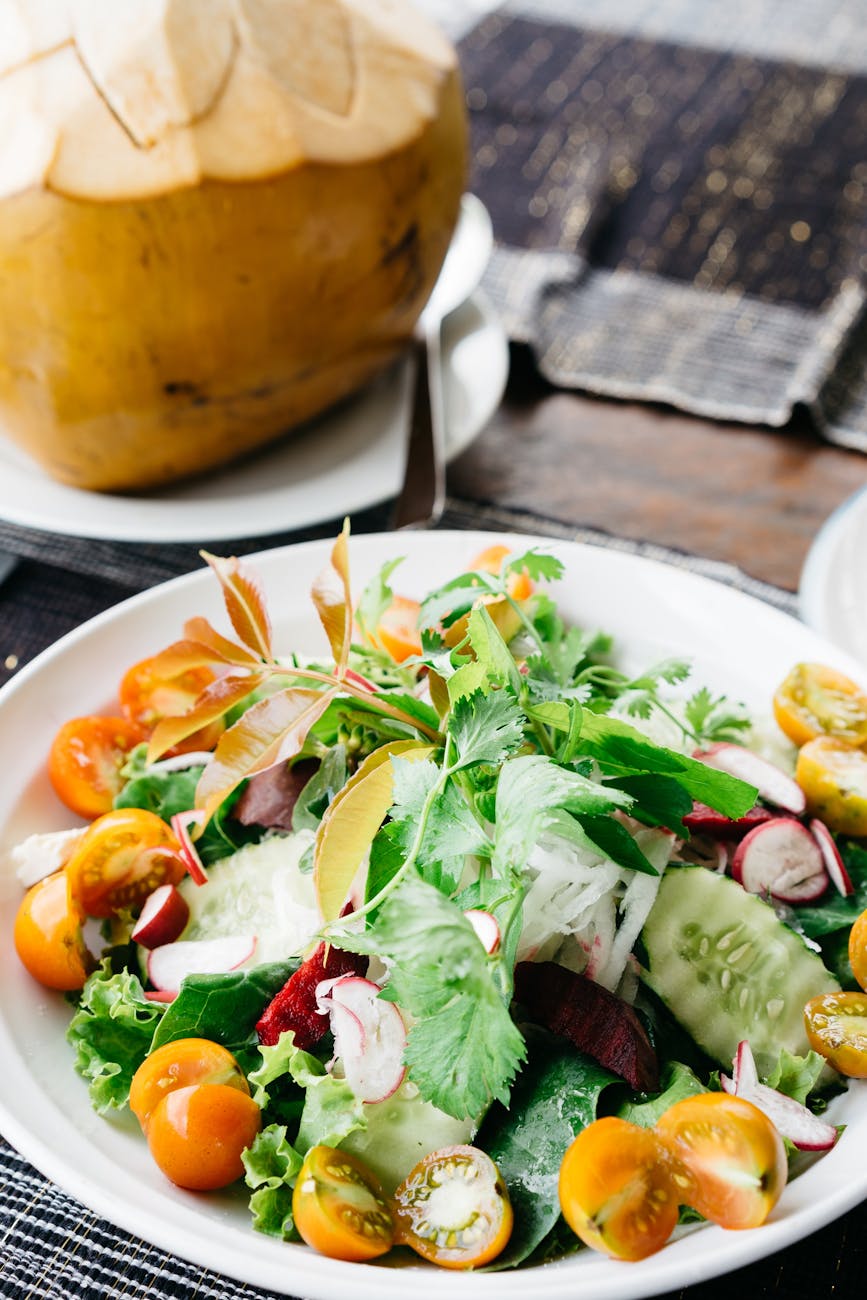
The Mediterranean diet is renowned for its health benefits and its focus on fresh, wholesome ingredients. Spain’s abundant sunshine and fertile land naturally lend themselves to the growth of fresh produce, including fruits, vegetables, legumes, and grains. Seafood plays a prominent role in Spanish cuisine, particularly in coastal regions, providing a source of lean protein and healthy fats. The widespread use of olive oil adds rich flavor and healthy monounsaturated fats. Many classic Spanish dishes, like gazpacho, lentil stews, and fresh salads, perfectly align with the principles of the Mediterranean diet.
Fact 12. Gazpacho is a famous chilled tomato-based soup.
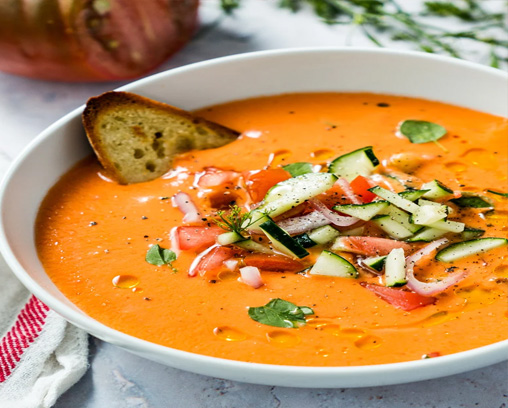
Perfect for hot weather, gazpacho is a refreshing blend of tomatoes, cucumbers, peppers, and other vegetables.
Gazpacho is a quintessential Spanish dish, ideal for warm weather. Its origins lie in Andalusia, where it likely originated as a simple bread-based soup for laborers in the fields. The classic gazpacho recipe has evolved to include a blend of fresh vegetables like tomatoes, cucumbers, peppers, onions, and garlic. Breadcrumbs are often added as a thickener, and a splash of vinegar provides a touch of acidity. All ingredients are blended together until smooth, resulting in a chilled, refreshing soup. Gazpacho is often served garnished with chopped vegetables or a drizzle of olive oil. There’s something uniquely rejuvenating about its bright flavors and cool temperature on a hot day.
Fact 13. Jamón ibérico (Iberian ham) is a Spanish delicacy.
This cured ham, made from acorn-fed Iberian pigs, has a rich, nutty flavor and melts-in-your-mouth texture.
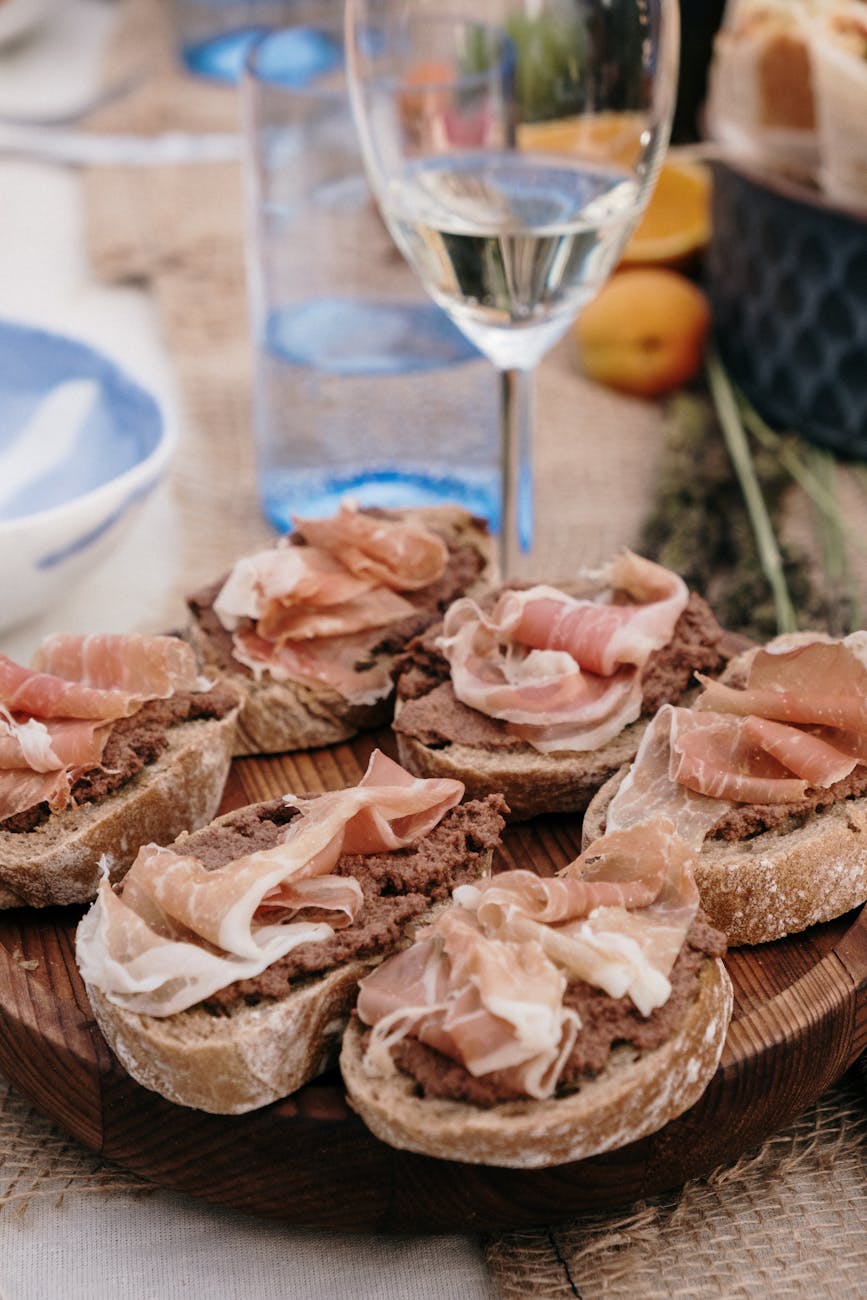
Jamón ibérico is a culinary treasure of Spain, celebrated for its exquisite flavor and melt-in-your-mouth texture. It is made from the hind leg of black Iberian pigs, a breed native to the Iberian Peninsula. The pigs’ diet often includes acorns, which contributes to the ham’s unique, nutty flavor profile. Jamón ibérico undergoes a lengthy curing process, typically lasting two years or more. The curing process enhances the ham’s flavor and develops its silky texture. Jamón ibérico is enjoyed on its own, thinly sliced and served as a tapa. It is often paired with cheese, olives, and bread for a simple yet luxurious appetizer.
Fact 14. Spaniards typically eat dinner quite late, often around 9 or 10 pm.
In Spain, the main meal of the day, known as “la comida,” is traditionally served between 2-4 pm and tends to be quite substantial. This extended lunch break allows for a siesta, a midday rest. Dinner, on the other hand, is eaten much later, usually around 9 or 10 pm. This late dinner time reflects the Spanish lifestyle, where evenings are a time to socialize and enjoy an extended meal with family and friends.
Fact 15. Many traditional Spanish desserts are milk-based. Think creamy flans, rice puddings, and custards.

Spanish desserts often showcase the country’s abundance of fresh milk and its long tradition of dairy farming. Here are some classic examples:
- Flan: A smooth, creamy custard dessert with a caramel topping.
- Arroz con leche: Spanish-style rice pudding flavored with cinnamon and lemon.
- Natillas: A rich custard often flavored with vanilla and cinnamon.
These milk-based desserts offer a comforting sweetness and a touch of nostalgia, rounding out a traditional Spanish meal.
Conclusion:
Spanish food is a vibrant and diverse culinary landscape, shaped by centuries of history, regional influences, and a love for fresh, seasonal ingredients. From the iconic paella and humble tapas to the delicate sweetness of milk-based desserts, each dish tells a story of the people, the land, and the traditions of Spain. As you explore this delicious cuisine, let its bold flavors, rich aromas, and convivial spirit transport you to the heart of Spanish culinary culture.
15 Frequently Asked Questions (FAQs) About Spanish Food:
-
What are some popular tapas dishes?
1)Patatas bravas (fried potatoes with spicy sauce)
2)Tortilla de patatas (Spanish omelet)
3)Croquetas (creamy, breaded fritters)
4)Gambas al ajillo (garlic shrimp)
5)Boquerones en vinagre (marinated anchovies)
6)Jamón ibérico (cured ham) -
Is paella vegetarian?
Traditional paella valenciana includes chicken and rabbit. However, vegetarian and seafood-based paellas are also very popular.
-
What is the difference between Spanish and Mexican chorizo?
Spanish chorizo is cured and smoked, with a firm texture. It can be eaten on its own or used in cooking. Mexican chorizo is fresh sausage made from ground pork and spices. It’s typically crumbled and cooked before serving.
-
What is the best wine to pair with Spanish food?
The best wine pairing depends on the specific dish. Here are some general suggestions:
Tapas: Try a dry sherry, a crisp white wine like Albariño, or a light Tempranillo from Rioja.
Paella: Opt for a refreshing rosé or a medium-bodied red like Rioja Crianza.
Seafood: Pair with a white wine like Albariño or a sparkling Cava. -
Where can I find authentic Spanish food outside of Spain?
Seek out restaurants specializing in Spanish cuisine or tapas bars. Look for places that use traditional ingredients and cooking techniques.
-
Is Spanish food spicy?
Spanish food is generally not very spicy. While certain dishes may incorporate a touch of heat from peppers or paprika, the focus is typically on fresh flavors and savory notes.
-
What are some typical Spanish breakfast foods?
A simple breakfast might include toasted bread with olive oil and tomato, churros with hot chocolate, or pastries and coffee.
-
What is the proper etiquette for eating tapas?
Tapas are meant to be shared, so order a variety of dishes for the table. It’s perfectly acceptable to use your hands for certain tapas. Enjoy the relaxed atmosphere and socialize with your companions.
-
Are there any vegetarian or vegan options in Spanish cuisine?
Absolutely! Many tapas dishes are naturally vegetarian, such as pan con tomate (bread with tomato), patatas bravas, grilled vegetables, and salads. You can also find vegetarian versions of dishes like paella.
-
What are some popular Spanish desserts?
Flan (custard with caramel sauce)
Arroz con leche (rice pudding)
Natillas (custard)
Churros with hot chocolate
Turrón (almond nougat candy, popular around Christmas) -
What is the difference between paella and arroz con cosas?
Paella is a specific rice dish originating from Valencia, with traditional ingredients like chicken, rabbit, beans, and saffron. “Arroz con cosas” means “rice with things” and is a more general term for various rice dishes, which can include paella variations as well as other ingredients like seafood, chorizo, or vegetables.
-
What are some typical Spanish ingredients?
Olive oil: The backbone of Spanish cooking.
Saffron: Essential for paella and other rice dishes.
Tomatoes: Featured in gazpacho, sauces, and more.
Garlic: Adds flavor to countless dishes.
Paprika (pimentón): Comes in sweet, smoky, and spicy varieties.
Cured meats: Jamón, chorizo, and other cured meats are common in tapas and stews. -
Are there regional specialties in Spanish cuisine?
Yes! Spain has diverse culinary regions. Examples include:Catalonia: Known for its seafood dishes and unique sauces like romesco.
Galicia: Famous for fresh seafood like octopus and scallops.
Basque Country: Celebrated for pintxos (similar to tapas) and innovative cuisine.
Andalusia: Home of gazpacho, fried fish, and sherry wines. -
What are some good resources for learning to cook Spanish food?
Cookbooks: Look for cookbooks specializing in Spanish or regional Spanish dishes.
Websites and blogs: Many websites offer recipes and information about Spanish cuisine.
Cooking classes: Check for Spanish cooking classes in your area or online.
Travel to Spain: The best way to immerse yourself in Spanish food culture is to experience it firsthand in Spain. -
Is it difficult to find Spanish ingredients outside of Spain?
It depends on where you live. Specialty stores, online retailers, and even larger supermarkets often carry essential ingredients like olive oil, saffron, paprika, and cured meats.




